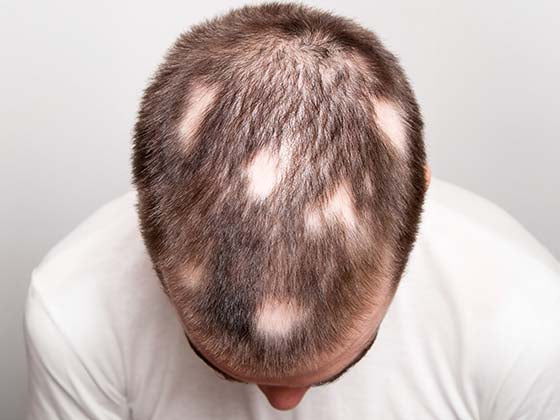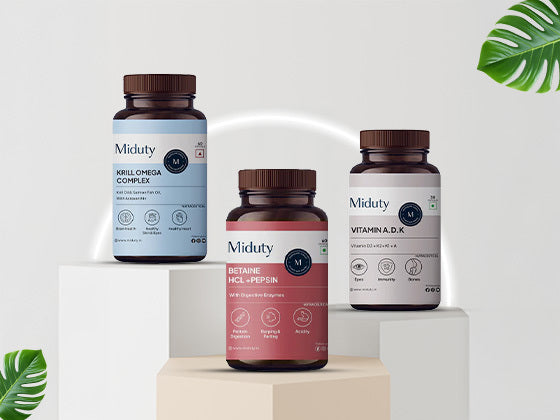One great approach to reduce damage to your hair while styling is to make your natural heat protectants. We'll look at seven natural, eco-friendly DIY heat protector ideas in this blog post.
Discovering Homemade Solutions for Hair Heat Protection

The blog "Discovering Homemade Solutions for Hair Heat Protection" goes over how to protect your hair from heat damage caused by styling appliances using natural, do-it-yourself solutions. Readers may learn about natural options for heat protection for hair and make educated decisions about their hair care regimen by having access to this thorough resource that presents several DIY solutions.
Utilizing Natural Ingredients from Your Kitchen
For hair care, a variety of natural chemicals that are frequently found in kitchens can be used, including heat protection. Here are a few instances: Aloe vera, coconut oil, olive oil, honey, shea butter, rice water, green tea, flaxseed gel, essential oils, and apple cider vinegar. These organic materials can be used as building blocks for homemade heat protectant formulas or as basic heat protectants. It's important to keep in mind, too, that although natural cures offer some protection, their level of heat protection may not match that of manufactured heat-protectant solutions. Additionally, before putting these chemicals on your hair, conduct patch tests to rule out any adverse effects.
Benefits of Organic Protectants Over Chemicals
Because of their natural origins and environmental friendliness, organic heat protectors have several advantages over chemical-based ones. Although there are many advantages to using organic protectants, it's vital to remember that their effectiveness in preventing heat damage may differ from that of certain synthetic chemicals designed for high-heat style. It's best to use caution while experimenting with these natural cures and be aware of their limitations when using high heat or doing lengthy-style sessions. For optimal results, always take into account the unique demands and types of hair while choosing hair care products.
Preparing Your Own Eco-Friendly Hair Protectants
Making your own eco-friendly hair protectants is an excellent way to protect your hair from heat damage while reducing your environmental impact. Here's a guide on preparing eco-friendly hair protectants using natural ingredients:
-
Coconut Oil Heat Protectant: Mix melted coconut oil with aloe vera gel or water in a spray bottle. Shake well and apply to damp hair before heat styling.
-
Shea Butter and Essential Oils Blend: Melt shea butter and mix it with a few drops of essential oils (like argan, lavender, or rosemary). Apply a small amount to hair before using heat tools.
-
Green Tea Leave-In Spray: Brew green tea and let it cool. Transfer to a spray bottle and spritz onto hair before heat styling to create a protective layer.
-
DIY Aloe Vera Gel Protectant: Blend fresh aloe vera gel with a few drops of jojoba oil. Apply to hair as a natural heat protectant before styling.
-
Honey and Olive Oil Serum: Combine honey with olive oil in a ratio of 1:2. Apply a small amount to damp hair before using heat tools.
-
Flaxseed Gel Heat Protectant: Boil flaxseeds in water until a gel-like consistency forms. Once cooled, apply to hair before heat styling for protection.
-
Rice Water Rinse: Rinse your hair with water after rinsing rice. Use this as a protective coating before heat styling.
-
Apple Cider Vinegar Solution: Dilute apple cider vinegar with water in a 1:3 ratio. Use as a final rinse after washing your hair to help protect it from heat.
-
Argan Oil Blend: Mix argan oil with aloe vera juice or water. Apply a small amount to hair before heat styling for added protection and shine.
-
Rosewater Mist: Combine rosewater with aloe vera gel and a few drops of essential oils. Use as a mist before heat styling for a fragrant, protective shield.
Before applying any DIY hair protectants, always do a patch test, particularly if you have any allergies or sensitivities. Although these DIY solutions provide some protection, their effectiveness might not be as high as that of store-bought heat protectants. Try a variety of ingredients and formulations to see which suits your hair type and preferences the best.
How to Use DIY Heat Protectants Effectively

Using DIY heat protectants effectively requires proper application techniques to ensure maximum hair protection. Choosing the right protectant for your hair type, applying on damp hair, sectioning your hair, using sparingly, focusing on the mid-lengths and ends, combing through, allowing absorption time, styling as usual, reapplying if necessary, avoiding overheating, and following up with aftercare are all steps in using DIY heat protectants. Keep in mind that, while DIY heat protectants can provide some protection, they may not be as effective as commercial heat protectants designed specifically for high-heat styling. Adjust the amount and frequency of application based on your hair's needs and the DIY protectant's effectiveness for your specific hair type.
Application Tips for Maximum Protection
Here are some application tips for heat protectants, whether DIY or commercial, to ensure maximum protection:
-
Begin with Clean, Damp Hair: Wash and gently towel-dry your hair before applying any heat protectant. On damp hair, the product distributes more evenly.
-
Apply the Appropriate Amount: Apply a small amount of heat protectant to your hair, concentrating on the mid-lengths and ends. Using too much product can weigh down your hair and affect styling.
-
Section Your Hair: Divide your hair into sections to ensure even distribution of the protectant. This allows every strand to receive adequate coverage.
-
Apply Evenly: Work the product through your hair evenly, using a comb or your fingers to ensure it reaches every strand. Concentrate on the areas where heat will be applied.
-
Keep Away from Roots: Avoid applying heat protectant directly to the roots as they produce natural oils and do not require as much protection from heat.
-
Allow Absorption Time: Let your hair absorb the protectant for a few minutes before using any heat styling tools. This allows the product to create a protective barrier.
-
Maintain Distance from Scalp: When applying heat tools, keep them a safe distance from your scalp to prevent overheating and potential damage to the hair follicles.
-
Use Heat Tools Wisely: Opt for the lowest effective heat setting on your styling tools. High temperatures can cause more damage, even with protectants.
-
Avoid Overuse: Use heat styling tools judiciously. Frequent or prolonged exposure to heat, even with protectants, can still cause damage to your hair over time.
-
Reapply as Needed: If restyling or using heat tools on additional sections of your hair, consider reapplying the protectant to ensure continued coverage.
-
Follow with Aftercare: After heat styling, consider using a nourishing serum or oil to add moisture and protect your hair from potential damage.
Combining Natural Ingredients for Enhanced Safety
Combining natural ingredients for a homemade heat protectant can enhance its efficacy and safety while providing better protection for your hair. Here are some combinations of natural ingredients known for their protective properties:
-
Coconut Oil and Aloe Vera Gel: Mix melted coconut oil with aloe vera gel for a lightweight yet protective heat protectant. Aloe vera soothes and forms a protective barrier, while coconut oil moisturises.
-
Shea Butter, Argan Oil, and Honey: Blend shea butter with argan oil and a small amount of honey. This combination offers moisturizing and conditioning properties while adding a protective layer against heat.
-
Green Tea Extract and Rice Water: Combine cooled green tea with rice water in a spray bottle. Green tea acts as an antioxidant, while rice water helps create a protective coating on the hair.
-
Flaxseed Gel with Essential Oils: Mix homemade flaxseed gel with a few drops of essential oils like lavender, rosemary, or tea tree oil for added nourishment and heat protection.
-
Aloe Vera Juice with Apple Cider Vinegar: Dilute aloe vera juice with a small amount of apple cider vinegar for a pH-balancing protectant that helps protect the hair from heat damage.
-
Honey and Olive Oil Blend: Combine honey and olive oil for a natural humectant-rich protectant. Honey retains moisture, while olive oil adds a protective layer.
-
Rosewater with Coconut Milk: Mix rosewater with a small amount of coconut milk for a hydrating and protective spray that adds moisture and shields the hair from heat.
When combining natural ingredients, consider the consistency, smell, and how well they blend. Perform a patch test before applying the mixture to your entire hair to ensure you do not have any allergic reactions or sensitivities to the ingredients. Experiment with these combinations to find the one that works best for your hair type and provides effective heat protection.
Daily Routines Incorporating DIY Protectants
Including homemade heat protectants in your regular hair care regimen can help protect your hair from heat damage brought on by style appliances. Although DIY protectants can provide some degree of protection, you can further minimise damage to your hair by minimising the use of heat styling equipment and embracing heatless style techniques wherever feasible. In addition, a nutritious diet, drinking plenty of water, and limiting exposure to outside stressors all support good hair.
Maintaining Hair Health with Natural Heat Protectants

Maintaining hair health while using natural heat protectants necessitates a multifaceted approach that prioritises protection, nourishment, and damage prevention. Here's how to keep your hair healthy while using these protectants:
-
Natural heat protectants should be applied sparingly and evenly to your hair. Apply the protectant primarily to the mid-lengths and ends, paying special attention to areas that will be exposed to heat.
-
Before using heat tools, make sure your hair is clean, damp, and protected with a natural protectant.
-
Choose low heat settings for your styling tools. This, combined with the protective layer from the natural ingredients, can help minimize damage.
-
Reduce the frequency of heat styling and allow your hair to recover between styling sessions. Embrace heatless styling alternatives when possible.
-
To replenish moisture and repair damage caused by heat styling, use deep conditioning treatments or hair masks enriched with natural oils, proteins, and vitamins regularly.
-
As a post-styling treatment, use natural oils such as argan oil, coconut oil, or olive oil. Apply a small amount to the ends of your hair to add shine and moisture.
-
Use hats or scarves to protect your hair from environmental stressors such as the sun, wind, or pollutants.
-
Maintain a nutrient-dense diet and stay hydrated. Adequate nutrition promotes hair health and resistance to damage.
-
Trim your hair every 6-8 weeks to remove split ends and prevent them from travelling up the hair shaft and causing further damage.
-
Avoid using too many different products or layering multiple products at the same time. This can cause your hair to become weighed down, potentially negating the protective benefits of natural heat protectants.
Caring for Heat Styled Hair Using Natural Methods
Natural heat-styled hair care entails gentle care, nourishment, and protection to maintain its health. Here's a natural hair care routine for heat-styled hair:
-
Deep Conditioning Masks: Use homemade or natural deep conditioning masks enriched with ingredients such as coconut oil, avocado, honey, or yoghurt. Apply these masks once a week to restore moisture and repair heat styling damage.
-
Leave-In Treatments: Utilize natural leave-in treatments such as argan oil, jojoba oil, or aloe vera gel on damp hair. They serve as natural conditioners, retaining moisture and protecting the skin.
-
Apple Cider Vinegar Rinse: After washing your hair, use a final rinse of diluted apple cider vinegar. This helps to balance the pH of the scalp, remove product buildup, and add shine.
-
Avoiding Heat Styling Whenever Possible: To give your hair a break from heat styling, try heatless hairstyles like braids, buns, or twists.
-
Cool Water Rinse: After washing your hair, rinse it with cold water to seal the cuticles and retain moisture.
-
Trimming: Schedule regular trims to remove split ends and prevent further damage from progressing up the hair shaft.
-
Protective Hairstyles: Consider protective hairstyles such as buns or braids that shield your hair from environmental factors and reduce manipulation, thereby improving hair health.
-
Avoiding Harsh Chemicals: Use natural or sulfate-free shampoos and conditioners to avoid stripping your hair of its natural oils.
-
Scalp Massages: Perform gentle scalp massages with natural oils like coconut or almond oil to stimulate blood circulation and promote healthy hair growth.
-
Healthy Diet and Hydration: Consume a diet rich in vitamins, proteins, and minerals, and drink plenty of water to nourish your hair from within.
-
Silk or satin pillowcases: Use silk or satin pillowcases to reduce friction and breakage while sleeping.
-
Sun and Elements Protection: Wear hats or scarves to protect your hair from direct sunlight, wind, and harsh weather conditions.
You can maintain the health and vitality of heat-styled hair while minimising damage and promoting overall hair well-being by following a natural care routine. Remember that consistency and patience are required to see long-term improvements in the health of your hair.
Recovering from Heat Damage with Homemade Remedies
Using natural ingredients known for their moisturising and reparative properties will aid in the recovery of your hair from heat damage. This is a detailed recovery plan that includes protein treatments, deep conditioning masks, moisturising oil treatments, aloe vera for soothing, apple cider vinegar rinsing, avoiding heat styling, gentle shampooing, silk or satin accessories, cutting split ends, maintaining a balanced diet and staying hydrated, and protecting against environmental stressors. Applying these natural therapies and habits consistently can aid in healing from heat damage gradually. It takes time for hair to recuperate, so have patience and stay away from harsh treatments or intense heat. Seeking advice from a trichologist or professional stylist could be advantageous if the damage is extensive.
Sustainable Practices for Long-Term Hair Health
Long-term hair health requires incorporating sustainable practises that prioritise both your hair's health and the environment. Here are some long-term hair health practises:
-
Choose natural, organic, and eco-friendly hair care products that are free of harsh chemicals and ingredients that are harmful to the environment. Look for products that have minimal packaging or that are made from recyclable materials.
-
Make your hair treatments with natural ingredients like avocado, coconut oil, aloe vera, and essential oils. This lessens reliance on commercial products while also reducing environmental impact.
-
To save water, limit the number of times you wash your hair. Consider using dry shampoo in between washes to keep your hair fresh without using too much water.
-
Rinse your hair with cold water. This helps to seal the hair cuticle, reduces frizz, and saves energy when compared to using hot water.
-
Invest in environmentally friendly and energy-efficient hair tools. Look for tools made of environmentally friendly materials or with energy-saving features.
-
Reduce heat damage and energy consumption by using heatless styling methods such as air-drying, braiding, or foam rollers.
-
When possible, dispose of hair care product containers responsibly by recycling or repurposing them.
-
Select hair accessories and brushes made from sustainable materials such as bamboo or recycled materials to reduce your reliance on plastic.
-
Avoid using too many products or styling tools. Reduce waste and environmental impact by adopting a minimalist approach to hair care.
-
Regular Trims and Hair Maintenance: Schedule regular trims to maintain healthy hair and prevent excessive damage that may require more intensive treatments and products.
-
Support Sustainable Brands: Support hair care brands committed to sustainability, ethical sourcing, and environmentally friendly practices.
By incorporating these sustainable practices into your hair care routine, you not only promote the long-term health of your hair but also contribute to environmental conservation and sustainability efforts.
Expert Insights: Embracing Natural Hair Care in Heat Styling

Maintaining the health of hair while embracing natural hair care requires striking a careful balance between shielding it from harm and preserving its natural state. Protective styling, pre-styling preparation, heat-free alternatives, lower heat settings, moisture restoration, post-styling nourishment, sustainable tools, minimalist approach, healthy lifestyle practices, regular hair maintenance, and professional advice and guidance are some expert insights on implementing natural hair care practices in the context of heat styling. People can embrace natural and sustainable hair care procedures that support long-term hair health while also successfully protecting their hair from heat damage by incorporating these expert ideas into their routines.
Professional Opinions on Natural vs. Chemical Protectants
The decision between chemical and natural protectants is frequently influenced by personal preferences, hair kinds, chemical apprehensions, and desired styling outcomes. When choosing heat protectants, people should think about expert advice, perform patch tests, and watch how their hair reacts. In addition, when utilising heat styling tools, it is essential to keep a regular hair care regimen regardless of the protectant utilised.
Tailoring DIY Solutions to Different Hair Types
Understanding the particular requirements of each hair type and adjusting ingredients accordingly are key to creating DIY solutions that are tailored to diverse hair types. Making DIY hair masks or treatments requires careful consideration of the unique requirements and features of your hair type. To determine which ingredient combination and ratio works best for your hair, you can also experiment. To help discover any adverse effects, patch testing should be performed before applying new chemicals to your entire scalp or hair. Additionally, you can get the best effects over time if you use these customised DIY treatments consistently based on your hair type.
Conclusion: Transforming Hair Care with Natural Heat Protectants

By incorporating natural heat protectants into your hair care regimen, you can prioritise the health and vibrancy of your hair while changing the way you approach heat style. Using natural heat protectants transforms hair care by putting your hair's health first and limiting exposure to potentially dangerous materials. Accept this change by experimenting with natural substances, making solutions unique to your hair type, and resolving to use a comprehensive, environmentally friendly method of hair care.









































1 comment
Catrena
Hi. Would it be possible for you to explain how much of each ingredient we should mix. All you do is say what to use, but not how much.
Hi. Would it be possible for you to explain how much of each ingredient we should mix. All you do is say what to use, but not how much.